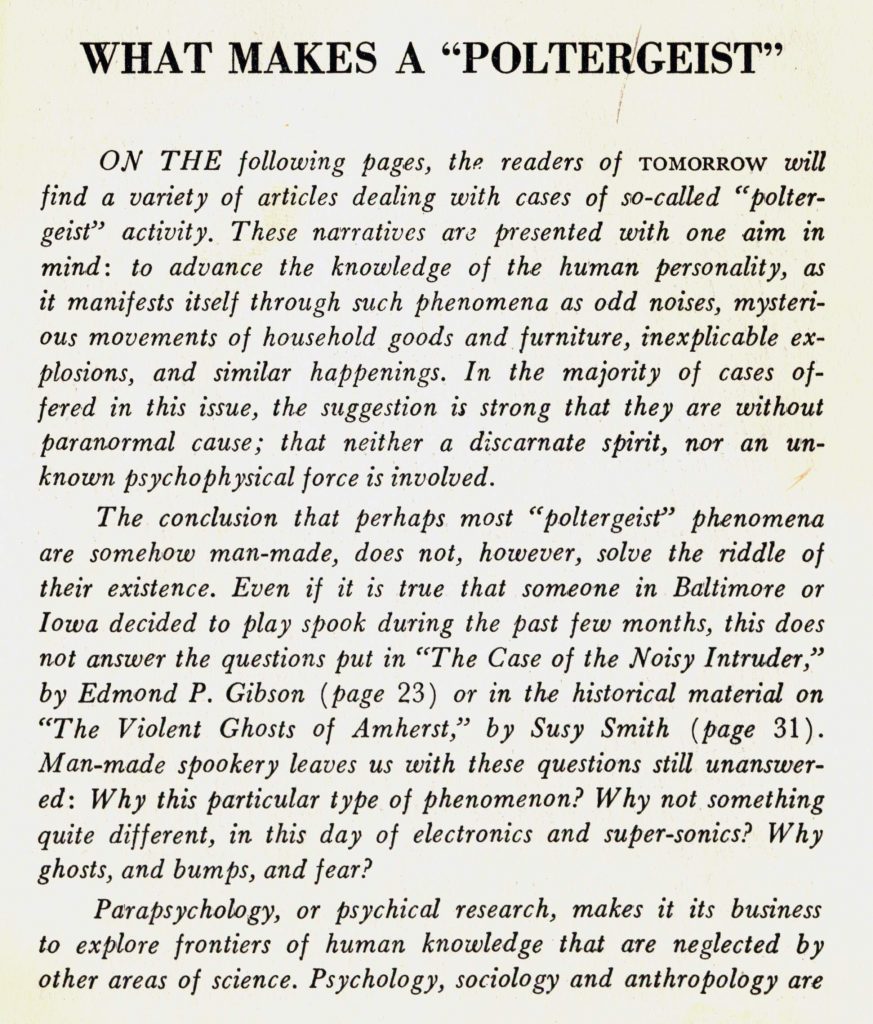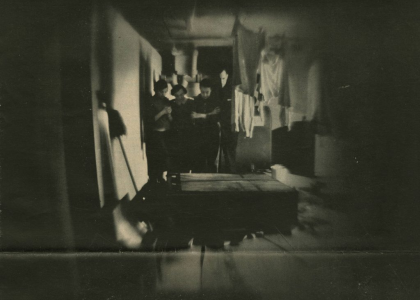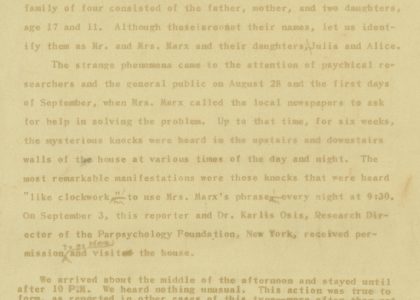
Stories about poltergeists saw an increase in media attention around the 1950s. The term “poltergeist” originates from German, meaning “noisy ghost.” Distinct from the typical ghost or spirit, according to some definitions, poltergeists generally presented themselves with unexplainable sounds and activities rather than visible appearances. Examples of poltergeist activity include moving objects and furniture, strange noises, and, more destructively, explosions.
The Eileen J. Garrett Parapsychology Foundation Collection features several items revolving around poltergeists. Materials include photographs, newspaper clippings, personal communications, and more.
For information on a few of these cases, please click on the icons below



!["The Baltimore Poltergeist" by Michael Naver and Travis Kidd, From Tomorrow, Vol. 8, No. 2, Spring 1960 The chandelier swung violently, pitchers and bottles crashed, a sugar bowl leaped, and an incense burner flew off the shelf. To any outside observer, the Edgar G. Jones family would appear as a model of a closely-knit, happy household. Lodged in a pleasant six-room brick house in a quiet residential section of Baltimore, the Joneses are three generations of a family - to all appearances, a harmonious, self-sufficient family. Yet the observer need only have entered the house between January 14 and February 8, 1960, to discover how far from the case this was. A succession of breaking, cracking, flying and exploding objects had left the house a shambles and tightened the family's nerves to the breaking point. More eerie yet, the events had fallen generally into the classic pattern of the poltergeist, or so-called "noisy ghost" phenomena. Edgar G. Jones, the homeowner, is a retired fireman, home for good after thirty-seven years of service in the Baltimore Fire Department. He is taciturn, almost phlegmatic, but he has fond [text continues on next page]](https://library.umbc.edu/specialcollections/garrett/wp-content/uploads/sites/5/2024/06/The-Baltimore-Poltergeist-420x300.jpg)